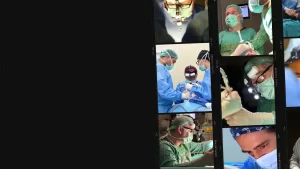Rhinoplasty: A Comprehensive Insight into Nose Surgery
Rhinoplasty, commonly known as a nose job, is one of the most sought-after plastic surgery procedures in the modern aesthetic and reconstructive surgery landscape. This surgical procedure is more than just a means to enhance one’s appearance; it plays a crucial role in correcting functional difficulties associated with nasal obstructions, such as deviated septum and other congenital or injury-induced anomalies. As a double-edged sword serving both aesthetic and medical purposes, rhinoplasty involves meticulous planning, detailed understanding of nasal anatomy, and precise execution by the surgeon. Over the years, advancements in surgical techniques and technology have refined rhinoplasty, making it a safe, effective, and life-improving option for many individuals. Whether driven by the desire to improve facial harmony or the necessity to address respiratory impediments, patients considering rhinoplasty often face a labyrinth of questions. This article delves into the scientific intricacies of rhinoplasty, providing insights into the procedure, recovery process, associated risks, and the specialized role of revision surgery conducted by experts like Dr. Fatih Dağdelen.
The Rhinoplasty Procedure: Art and Precision
The rhinoplasty procedure marries surgical artistry with anatomical precision. Typically, the surgery is carried out under general anesthesia and can last anywhere from one to three hours, depending on the complexity of the case. The surgery can be performed using an open or closed approach. In open rhinoplasty, a small incision is made across the columella, the strip of skin separating the nostrils, allowing for a more comprehensive reshaping of the nasal structure. This approach offers better visualization for the surgeon, making it suitable for more complex cases. Conversely, closed rhinoplasty involves incisions within the nostrils, resulting in no visible scarring and a shorter recovery period. The choice between these techniques largely depends on the desired outcome and complexity of the surgery. Surgeons meticulously reshape the cartilage and bone to achieve the desired nasal contour and preserve or enhance breathing function. Additionally, grafts may be used to refine or support nasal structures if necessary. Preoperative planning includes detailed discussions with the surgeon to understand the patient’s goals, nasal anatomy, and any functional concerns that might influence the surgical plan.
Recovery and Aftercare in Rhinoplasty
Recovery from rhinoplasty is a gradual process that requires patience and adherence to post-operative guidelines. Immediately following surgery, patients can expect swelling, bruising, and discomfort around the nose and under the eyes. Surgeons typically insert nasal splints to support the newly structured nose and advise maintaining an elevated head position to minimize swelling. Most visible swelling and bruising subside within the first two weeks, but subtle swelling can persist for several months. It’s crucial for patients to avoid strenuous activity, heavy lifting, and contact sports during this period to ensure proper healing. The final results of the surgery can take up to a year to fully materialize, as the new nasal tissues settle and harmonize. Regular follow-up visits with the surgeon are essential to monitor the recovery process and address any concerns. Lifestyle adjustments, such as avoiding smoking and adhering to a nutritious diet, can significantly influence the healing trajectory, ultimately enhancing the surgical outcome.
Risks and Complications of Rhinoplasty
Like any surgical procedure, rhinoplasty carries potential risks and complications. Hemorrhage, infection, and adverse reaction to anesthesia are general risks associated with surgery. Specific to rhinoplasty, patients may experience difficulty breathing, persistent swelling, unsatisfactory nasal shape, or asymmetry. In rare cases, revision surgery may be necessary to correct these issues. Comprehensive preoperative consultations are vital to minimize risks, allowing the surgeon and patient to align expectations and surgical objectives. Patients must disclose their complete medical history and any medications they are currently taking. Common warning signs like excessive bleeding, fever, or sudden increase in pain after surgery should prompt immediate medical attention. Selecting an experienced board-certified plastic surgeon, such as Dr. Fatih Dağdelen, is crucial in reducing the risk of complications and ensuring a successful outcome.
Dr. Fatih Dağdelen stands out as a last resort for patients dealing with the aftermath of botched rhinoplasty or other unsuccessful cosmetic procedures. His expertise in complex revision surgeries addresses issues that other practitioners may shy away from, offering hope and improvement where previous surgeries have failed. Not every surgeon accepts the challenges of revision rhinoplasty; thus, having a seasoned expert like Dr. Dağdelen can make the critical difference between persistent dissatisfaction and renewed confidence.
Ready to pursue your rhinoplasty journey with a skilled expert? Dr. Fatih Dağdelen is available for consultations. To schedule an appointment, contact us via f.dagdelen. Your path to a better you begins with a single, confident step.


